
















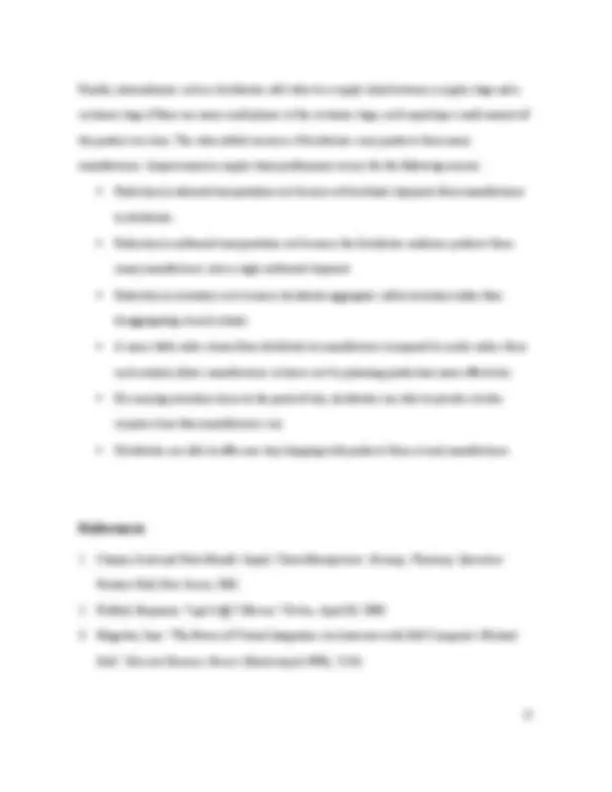

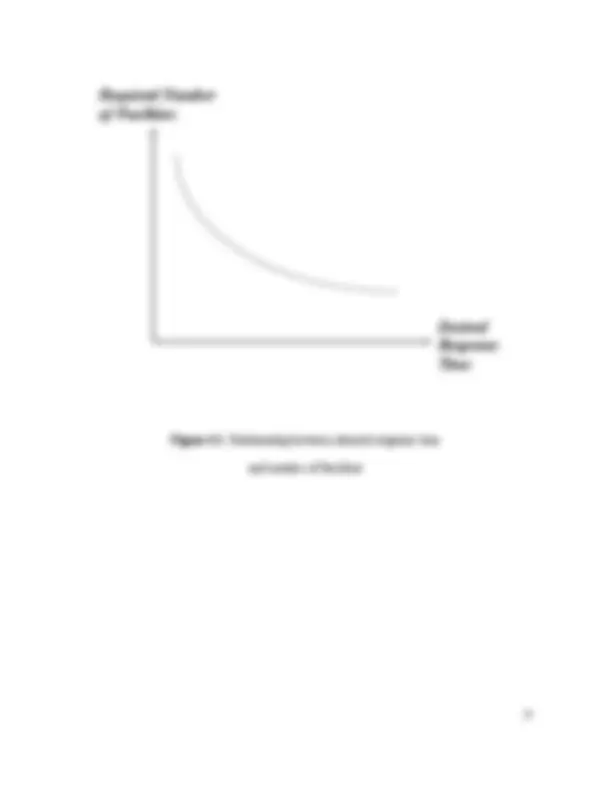





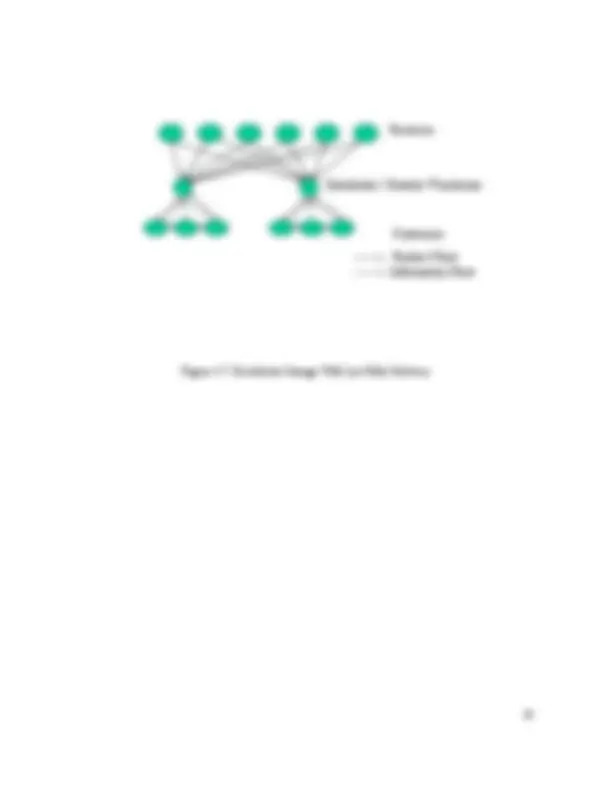

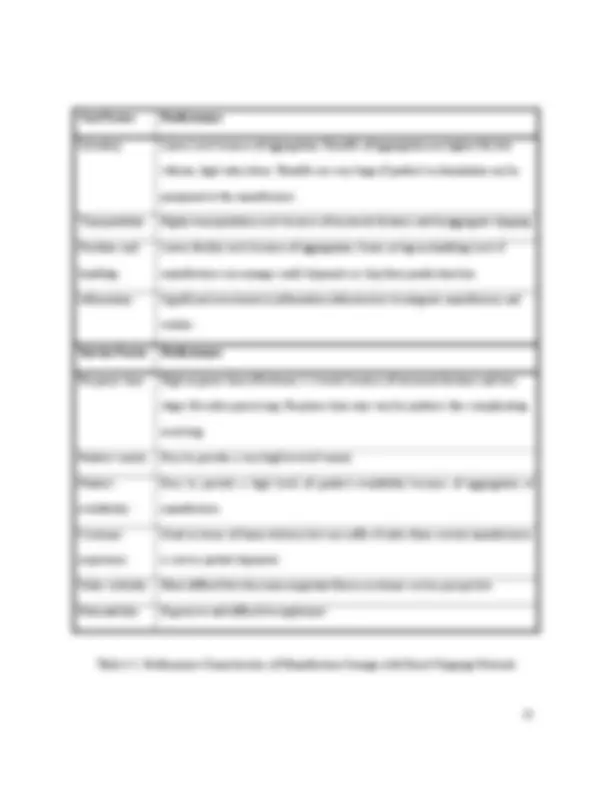


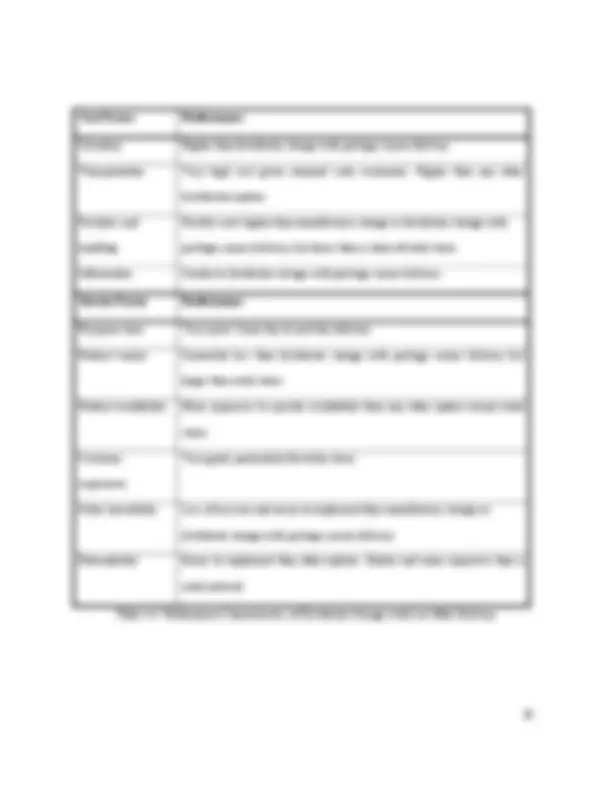
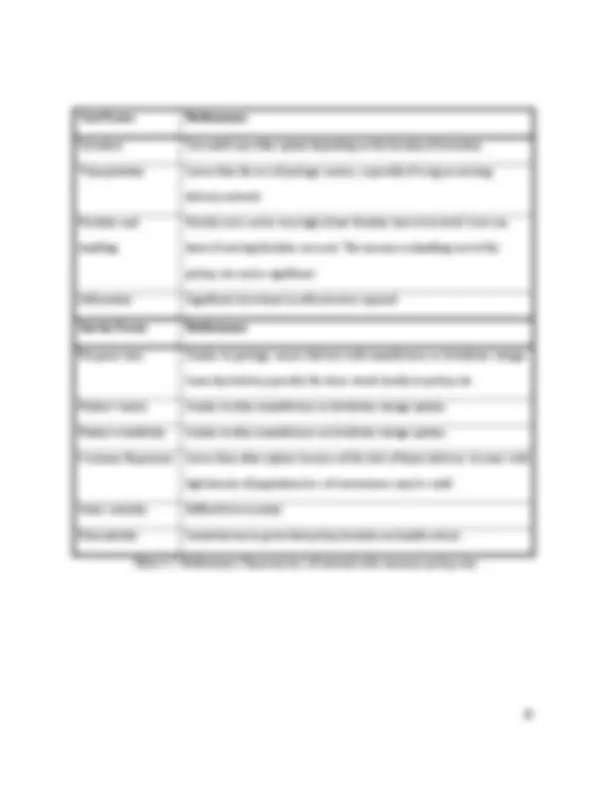
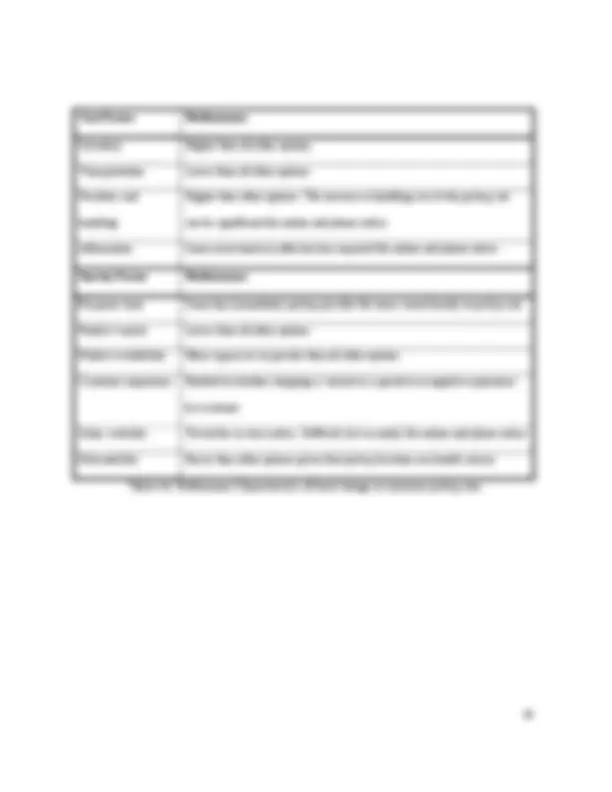




Study with the several resources on Docsity

Earn points by helping other students or get them with a premium plan


Prepare for your exams
Study with the several resources on Docsity

Earn points to download
Earn points by helping other students or get them with a premium plan
Community
Ask the community for help and clear up your study doubts
Discover the best universities in your country according to Docsity users
Free resources
Download our free guides on studying techniques, anxiety management strategies, and thesis advice from Docsity tutors
This paper describes a framework for designing the distribution network in a supply chain. Various factors influencing the choice of distribution network are described. We then discuss different choices of distribution networks and their relative strengths and weaknesses. The paper concludes by identifying distribution networks that are best suited for a variety of customer and product characteristics
Typology: Exams
1 / 42

This page cannot be seen from the preview
Don't miss anything!



































Sunil Chopra Kellogg School of Management, Northwestern University Tel: 1-847-491-8169; Fax: 1-847-467-1220; e-mail:s-chopra@kellogg.northwestern.edu2001 Sheridan Road, Evanston, IL 60208, U.S.A
Abstract This paper describes a framework for designing the distribution network in a supply chain. Various factors influencing the choice of distribution network are described. We then discuss different choices of distribution networks and their relative strengths and weaknesses. The paper concludes by identifying distribution networks that are best suited for a variety of customer and product characteristics.
Distribution refers to the steps taken to move and store a product from the supplier stage to a customer stage in the supply chain. Distribution is a key driver of the overall profitability of a firm because it directly impacts both the supply chain cost and the customer experience. Good distribution can be used to achieve a variety of supply chain objectives ranging from low cost to high responsiveness. As a result, companies in the same industry often select very different distribution networks.
Dell distributes its PCs directly to end consumers, while companies like Hewlett Packard and Compaq distribute through resellers [3]. Dell customers wait several days to get a PC while customers can walk away with an HP or Compaq PC from a reseller. Gateway opened Gateway Country stores where customers could check out the products and have sales people help them configure a PC that suited their needs. Gateway, however, chose to sell no products at the stores, with all PCs shipped directly
from the factory to the customer. In 2001, Gateway closed several of these stores given their poor financial performance. Apple Computers is planning to open retail stores where computers will be sold [4]. These PC companies have chosen three different distribution models. How can we evaluate this wide range of distribution choices? Which ones serve the companies and their customers better?
W.W. Grainger, an MRO distributor, stocks about 100,000 skus that can be sent to customers within a day of the order being placed. The remaining slower moving products are not stocked but shipped directly from the manufacturer when a customer places an order. It takes several days for the customer to receive the product in this case. Are these distribution choices appropriate? How can they be justified? When should a distribution network include an additional stage such as a distributor? Proponents of e-business had predicted the death of intermediaries like distributors. Why were they proved wrong in many industries?
In this paper we provide a framework and identify key dimensions along which to evaluate the performance of any distribution network.
At the highest level, performance of a distribution network should be evaluated along two dimensions:
Firms that target customers who can tolerate a large response time require few locations that may be far from the customer and can focus on increasing the capacity of each location. On the other hand, firms that target customers who value short response times need to locate close to them. These firms must have many facilities, with each location having a low capacity. Thus, a decrease in the response time customers desire increases the number of facilities required in the network, as shown in Figure 4.1. For example, Borders provides its customers with books on the same day but requires about 400 stores to achieve this goal for most of the United States. Amazon, on the other hand, takes about a week to deliver a book to its customers, but only uses about 5 locations to store its books.
Changing the distribution network design affects the following supply chain costs:
As the number of facilities in a supply chain increases, the inventory and resulting inventory costs also increase as shown in Figure 4.2. For example, Amazon with fewer facilities is able to turn its inventory about twelve times a year, while Borders with about 400 facilities achieves only about two turns per year. As long as inbound transportation economies of scale are maintained, increasing the number of facilities decreases total transportation cost, as shown in Figure 4.2. If the number of facilities is increased to a point where there is a significant loss of economies of scale in inbound transportation, increasing the number of facilities increases total transportation cost. A distribution
network with more than one warehouse allows Amazon.com to reduce transportation cost relative to a network with a single warehouse. Facility costs decrease as the number of facilities is reduced as shown in Figure 4.2, because a consolidation of facilities allows a firm to exploit economies of scale.
Total logistics costs are the sum of inventory, transportation, and facility costs for a supply chain network. As the number of facilities is increased, total logistics costs first decrease and then increase as shown in Figure 4.3. Each firm should have at least the number of facilities that minimize total logistics costs. As a firm wants to further reduce the response time to its customers, it may have to increase the number of facilities beyond the point that minimizes logistics costs. A firm should add facilities beyond the cost- minimizing point only if managers are confident that the increase in revenues because of better responsiveness is greater than the increase in costs because of the additional facilities.
----------------------------------------------Insert Figure 4.3 Here
We will discuss distribution network choices in the context of distribution from the manufacturer to the end consumer. When considering distribution between any other pair of stages, such as supplier to
model for slow moving footwear. W.W. Grainger also uses drop shipping to deliver slow moving items that are not carried in inventory.
The biggest advantage of drop shipping is the ability to centralize inventories at the manufacturer. A manufacturer can aggregate demand and provide a high level of product availability with lower levels of inventory than individual retailers. The benefits from centralization are highest for high value, low volume items with unpredictable demand. The decision of Nordstrom to drop-ship low volume shoes satisfies these criteria. Similarly, bags sold by eBags tend to have high value and low relatively volume per sku. The inventory benefits of aggregation are small for items with predictable demand and low value [1]. Thus, drop shipping would not offer a significant inventory advantage to an online grocer selling a staple item like detergent.
Drop shipping also offers the manufacturer the opportunity to further lower inventories by postponing customization until after the customer order has been placed. Build-to-order companies such as Dell hold inventories as common components and postpone product customization, thus lowering the level of inventories carried.
Transportation costs are high with drop shipping because the average outbound distance to the end consumer is large and package carriers must be used to ship the product. Package carriers have high shipping costs per unit compared to truckload(TL) or less-than-truckload (LTL) carriers. With drop shipping, a customer order with items from several manufacturers will involve multiple shipments to the customer. This loss in aggregation in outbound transportation further increases cost.
Supply chains save on the fixed cost of storage facilities when using drop shipping because all inventories are centralized at the manufacturer. There can be some savings of handling costs as well because the transfer from manufacturer to retailer no longer occurs. Handling costs can be significantly reduced if the manufacturer has the capability to ship orders directly from the production line.
A good information infrastructure is needed so that the retailer can provide product availability information to the customer even though the inventory is located at the manufacturer. The customer should also have visibility into order processing at the manufacturer even though the order is placed with the retailer. Drop shipping will generally require significant investment in the information infrastructure. The information infrastructure requirement is somewhat simpler for direct sellers like Dell because two stages (retailer and manufacturer) do not need to be integrated.
Response times tend to be large when drop shipping is used because the order has to be transmitted from the retailer to the manufacturer and shipping distances are on average longer from the manufacturer's centralized site. eBags, for example, states that order processing may take from 1- days and ground transportation after that may take from 3-11 business days. This implies that customer response time at eBags is 4-16 days using ground transportation and drop shipping. Another issue is that the response time need not be identical for every manufacturer that is part of a customer order. Given an order containing products from several sources, the customer will receive multiple partial shipments over time making receiving more complicated for the customer.
Manufacturer storage with drop shipping allows a high level of product variety to be made available to the customer. W.W. Grainger is able to offer hundreds of thousands of slow moving items from
----------------------------------------------Insert Table 4.1 Here
Given its performance characteristics, manufacturer storage with direct shipping is best suited for a large variety of low demand, high value items where customers are willing to wait for delivery and accept several partial shipments. Manufacturer storage is also suitable if it allows the manufacturer to postpone customization, thus reducing inventories. For drop-shipping to be effective, there should be few sourcing locations per order. It is thus ideal for direct sellers that are able to build-to-order. Drop shipping is hard to implement if there are more than 20-30 sourcing locations that have to ship directly to customers on a regular basis. For products with very low demand, however, drop shipping may be the only option.
Unlike pure drop shipping where each product in the order is sent directly from each manufacturer to the end customer, in-transit merge combines pieces of the order coming from different locations so that the customer gets a single delivery. Information and product flows for the in-transit merge network are as shown in Figure 4.5. When a customer orders a PC from Dell along with a Sony monitor, the package carrier picks up the PC at the Dell factory, the monitor at the Sony factory and merges the two together at a hub before making a single delivery to the customer.
As with drop shipping, the ability to aggregate inventories and postpone product customization is a significant advantage of in-transit merge. In-transit merge allows Dell and Sony to aggregate all their inventories at the factory. This approach will have the greatest benefits for products with high value whose demand is hard to forecast, in particular if product customization can be postponed.
In most cases, transportation costs are lower than drop shipping because of the merge that takes place at the carrier hub prior to delivery to the customer. An order with products from three manufacturers thus requires only one delivery to the customer compared to three that would be required with drop shipping. Fewer deliveries save transportation cost and simplify receiving.
Facility and processing costs for the manufacturer and the retailer are as in drop shipping. The party performing the in-transit merge has higher facility costs because of the merge capability required. Receiving costs at the customer are lower because a single delivery is received. Overall supply chain facility and handling costs are somewhat higher than drop shipping.
A very sophisticated information infrastructure is needed to allow the in-transit merge. Besides information, operations at the retailer, manufacturers, and the carrier must be coordinated. The investment in information infrastructure will be higher than for drop shipping.
Response times, product variety, and availability are similar to drop shipping. Response times may be marginally higher because of the need to perform the merge. Customer experience is likely to be better than drop shipping because the customer receives only one delivery for their order instead of many partial shipments. Order visibility is a very important requirement. While the initial setup is difficult because it requires integration of manufacturer, carrier, and retailer, tracking itself becomes easier given the merge that occurs at the carrier hub. Up to the point of merge, the order from each
intermediate location to the final customer. Amazon.com as well as industrial distributors like W.W. Grainger use this approach combined with drop shipping from a manufacturer. Information and product flows when using distributor storage with delivery by a package carrier are shown in Figure 4.6.
----------------------------------------------Insert Figure 4.6 Here
Relative to manufacturer storage, distributor storage will require a higher level of inventory because the distributor / retailer warehouse aggregates demand uncertainty to a lower level than the manufacturer. From an inventory perspective, distributor storage makes sense for products with somewhat higher demand. Both Amazon and Grainger only stock the medium to fast moving items at their warehouse with slower moving items stocked further upstream. In some instances, postponement can be implemented with distributor storage but it does require that the warehouse develop some assembly capability. Distributor storage, however, requires much less inventory than a retail network. Amazon achieves about 12 turns of inventory using warehouse storage while Borders achieves about 2 turns using retail stores.
Transportation costs are somewhat lower for distributor storage compared to manufacturer storage because an economic mode of transportation (e.g. truckload) can be employed for inbound shipments to the warehouse, which is closer to the customer. Unlike manufacturer storage where multiple shipments may need to go out for a single customer order with multiple items, distributor storage allows outbound orders to the customer to be bundled into a single shipment further reducing transportation cost. Transportation savings from distributor storage relative to manufacturer storage increase for faster moving items.
Compared to manufacturer storage, facility costs are somewhat higher with distributor storage because of a loss of aggregation. Processing and handling costs are comparable to manufacturer storage unless the factory is able to ship to the end customer directly from the production line. In that case, distributor storage will have higher processing costs. From a facility cost perspective, distributor storage is not appropriate for extremely slow moving items.
The information infrastructure needed with distributor storage is significantly less complex than that needed with manufacturer storage. The distributor warehouse serves as a buffer between the customer and the manufacturer, decreasing the need to coordinate the two completely. Real time visibility between customers and the warehouse is needed, whereas real time visibility between the customer and the manufacturer is not. Visibility between the distributor warehouse and manufacturer can be achieved at a much lower cost than real time visibility between the customer and manufacturer.
Response time with distributor storage is better than with manufacturer storage because distributor warehouses are, on average, closer to customers and the entire order is aggregated at the warehouse when shipped. Amazon, for example, processes all warehouse-stored items within a day and it then takes 3-7 business days using ground transportation for the order to reach the customer. Grainger processes customer orders on the same day and has enough warehouses to deliver most orders next day using ground transport. Warehouse storage will limit to some extent the variety of products that can be offered. Grainger does not store very low volume items at its warehouse, relying on manufacturers to drop ship those products to the customer. Customer convenience is high with distributor storage because a single shipment reaches the customer in response to an order. Order visibility becomes easier than with manufacturer storage because there is a single shipment from the warehouse to the customer and only one stage of the supply chain is directly involved in filling the
Distributor storage with last mile delivery requires higher levels of inventory than all options other than retail stores, because it has a lower level of aggregation. From an inventory perspective, warehouse storage with last mile delivery is suitable for relatively fast moving items where disaggregation does not lead to a significant increase of inventory. Staple items in the grocery industry fit this description.
Transportation costs are highest using last mile delivery. This is because package carriers aggregate delivery across many retailers and are able to obtain better economies of scale than available to a distributor / retailer attempting last mile delivery. Delivery costs (including picking and transportation) can be as high as $30-$40 per home delivery in the grocery industry. Last mile delivery may be somewhat cheaper in dense cities. Transportation costs may also be justifiable for bulky products where the customer is willing to pay for home delivery. Home delivery for water and large bags of rice has proved quite successful in China, where the high population density has helped decrease delivery costs.
Facility and processing costs are very high using this option given the large number of facilities required. Facility costs are somewhat lower than a network with retail stores but much higher than either manufacturer storage or distributor storage with package carrier delivery. Processing costs, however, are much higher than a network of retail stores because all customer participation is eliminated. A grocery store doing last mile delivery, performs all the processing until the product is delivered to the customer's home unlike a supermarket where there is much more customer participation.
The information infrastructure with last mile delivery is similar to distributor storage with package carrier delivery. It requires, however, the additional capability of scheduling deliveries.
Response times are faster than the use of package carriers. Product variety is generally lower than distributor storage with carrier delivery. The cost of providing product availability is higher than every option other than retail stores. The customer experience is very good using this option, particularly for bulky, hard to carry items. Order visibility is less of an issue given that deliveries are made within 24 hours. The order-tracking feature does become important to handle exceptions in case of incomplete or undelivered orders. Of all the options discussed, returnability is best with last mile delivery because trucks making deliveries can also pick up returns from customers. Returns are more expensive to handle than at a retail store where a customer can bring the product back.
The performance characteristics of distributor storage with last mile delivery are summarized in Table 4.4.
In areas with high labor cost, it is very hard to justify distributor storage with last mile delivery on the basis of efficiency or improved margin. It can only be justified if there is a large enough customer segment willing to pay for this convenience. In that case, an effort should be made to couple last mile delivery with an existing network to exploit economies of scale and improve utilization. An example is Albertson's use of existing grocery store facilities and labor to provide home delivery. A portion of the grocery store serves as a fulfillment center for online orders as well as a replenishment center for the grocery store itself. This helps improve utilization and lower the cost of providing this service. Last mile delivery may be justifiable if customer orders are large enough and customers are willing to pay
Inventory costs using this approach can be kept low with either manufacturer or distributor storage to exploit aggregation. Grainger keeps its inventory of fast moving items at pickup locations, while slow moving items are stocked at a central or warehouse, or in some cases the manufacturer.
Transportation cost is lower than any solution using package carriers because significant aggregation is possible when delivering orders to a pickup site. This allows the use of truckload or less-than- truckload carriers to transport orders to the pickup site. In a case like 7 Eleven Japan, the marginal increase in transportation cost is small because trucks are already making deliveries to the stores and their utilization can be improved by including online orders.
Facility costs are high if new pickup sites have to be built. A solution using existing sites will lower the additional facility costs. This, for example, is the case with 7dream.com and W.W. Grainger where the stores already exist. Processing costs at the manufacturer or the warehouse are comparable to other solutions. Processing costs at the pick up site are high because each order must be matched with a specific customer when they arrive. Creating this capability can increase processing costs significantly if appropriate storage and information systems are not provided. Increased processing cost at the pickup site is the biggest hurdle to the success of this approach.
A significant information infrastructure is needed to provide visibility of the order until the customer picks it up. Very good coordination is needed between the retailer, the storage location, and the pickup location.
A response time comparable to the use of package carriers can be achieved in this case. Variety and availability comparable to any manufacturer or distributor storage option can be provided. There is some loss of customer experience because unlike the other options discussed, customers must come
and pick up their orders. On the other hand, customers who do not want to pay online can pay by cash using this option. In countries like Japan where 7 Eleven has over 8,000 outlets, it can be argued that the loss of customer convenience is small because most customers are close to a pickup site and can collect their order at their own convenience. In some cases, this option can be considered more convenient because it does not require the customer to be at home at the time of delivery.
Order visibility is extremely important for customer pickups. The customer must be informed when the order has arrived and the order should be easily identified once the customer arrives to pick it up. Such a system will be hard to implement because it requires integration of several stages in the supply chain. Returns can potentially be handled at the pickup site. The problem with some existing sites such as 7 Eleven stores is that they are not equipped to accept and process returns for products not sold at the stores. From a transportation perspective, however, return flows can be handled using the delivery trucks. For customers, returning a product will be easy because they have a physical location to bring it to. Overall, returnability is fairly good using this option.
The performance characteristics of manufacturer or distributor storage with consumer pickup sites are summarized in Table 4.5.
The main advantage of a network with consumer pickup sites is that it can lower delivery cost, thus expanding the set of products sold as well as customers served online. The major hurdle is the increased handling cost at the pickup site. Such a network is likely to be most effective if existing locations such as convenience or grocery stores are used as pickup sites because such a network